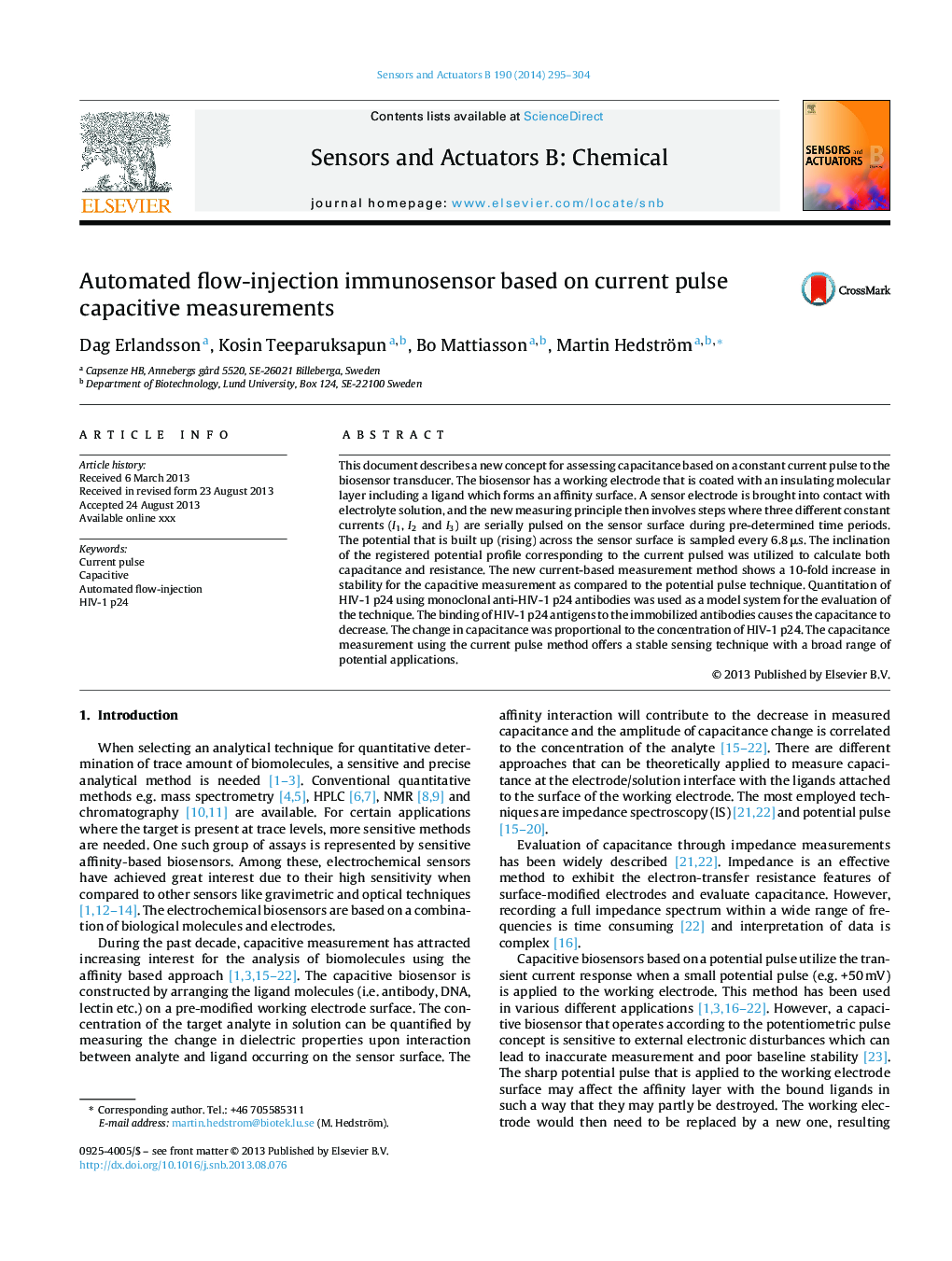| Article ID | Journal | Published Year | Pages | File Type |
|---|---|---|---|---|
| 7147779 | Sensors and Actuators B: Chemical | 2014 | 10 Pages |
Abstract
This document describes a new concept for assessing capacitance based on a constant current pulse to the biosensor transducer. The biosensor has a working electrode that is coated with an insulating molecular layer including a ligand which forms an affinity surface. A sensor electrode is brought into contact with electrolyte solution, and the new measuring principle then involves steps where three different constant currents (I1, I2 and I3) are serially pulsed on the sensor surface during pre-determined time periods. The potential that is built up (rising) across the sensor surface is sampled every 6.8 μs. The inclination of the registered potential profile corresponding to the current pulsed was utilized to calculate both capacitance and resistance. The new current-based measurement method shows a 10-fold increase in stability for the capacitive measurement as compared to the potential pulse technique. Quantitation of HIV-1 p24 using monoclonal anti-HIV-1 p24 antibodies was used as a model system for the evaluation of the technique. The binding of HIV-1 p24 antigens to the immobilized antibodies causes the capacitance to decrease. The change in capacitance was proportional to the concentration of HIV-1 p24. The capacitance measurement using the current pulse method offers a stable sensing technique with a broad range of potential applications.
Keywords
Related Topics
Physical Sciences and Engineering
Chemistry
Analytical Chemistry
Authors
Dag Erlandsson, Kosin Teeparuksapun, Bo Mattiasson, Martin Hedström,
